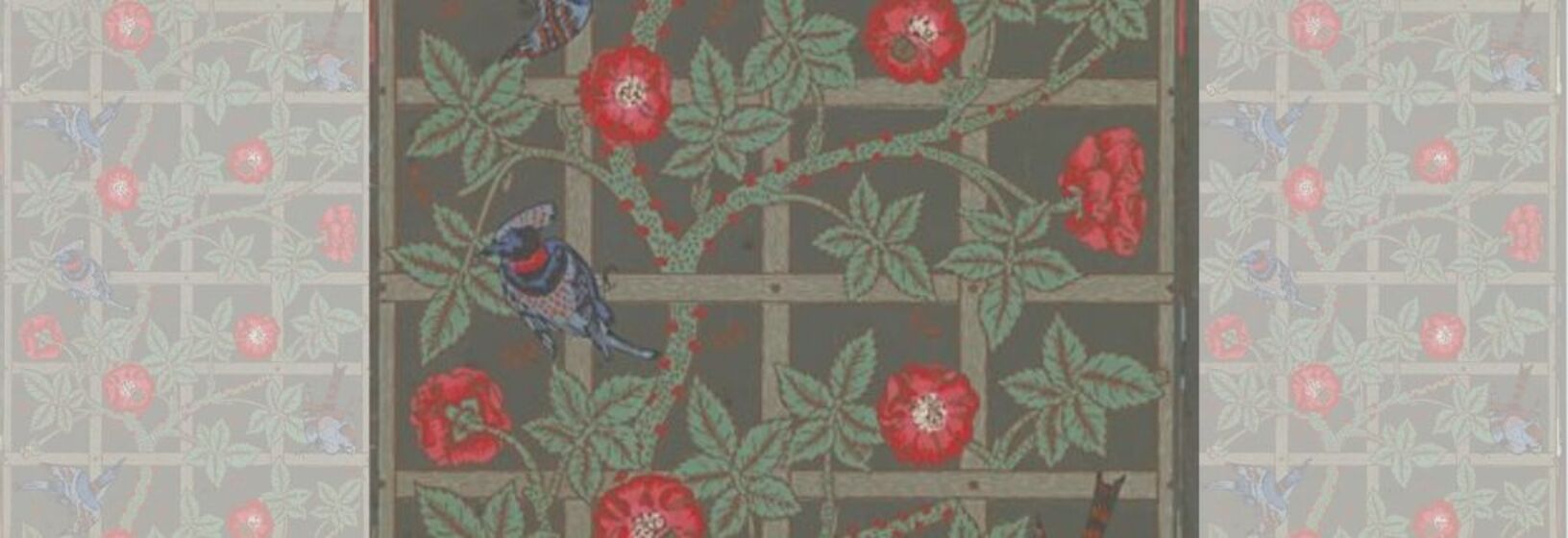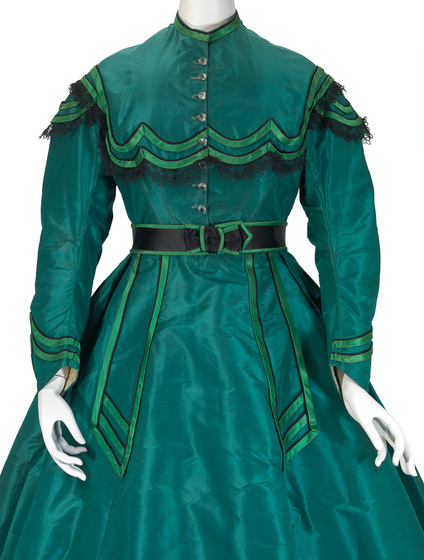The Case of the poisonous pigment
Several 'cases' in Fashion Detective stemmed from the nineteenth-century palette, specifically purple, green and black. Using chemical analysis to prove or disprove hypotheses about the works on display, these investigations charted the relationship between science and fashionable aesthetics in this era.
The case of the poisonous pigment sought to determine whether green arsenical pigments were present in the NGV’s collection of costume, accessories and decorative arts. In widespread use as colouring agents in the first half of the nineteenth century, arsenical dyes were found in wallpapers, dress fabrics, soaps, candles, children’s toys and confectionary.
Yet by the 1850s, after a three-year-old boy died from ingesting pigment flakes, anxiety about the prevalence of arsenic was voiced in British news articles, medical pamphlets and books. Less fatal poisonings were soon linked to the wearing of arsenical garments: a London physician identified green muslins as especially hazardous after analysing a sample that contained sixty grains of Scheele’s green per square yard. (1)
1. James C. Whorton, The Arsenic Century: How Victorian Britain Was Poisoned at Home, Work, and Play, Oxford University Press, Oxford, 2010, p. 181.











